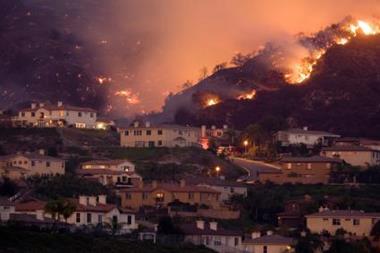Siamak Daneshvaran, senior vice president and director of engineering for Aon Re’s Impact Forecasting, talks to Catastrophe Risk Management. By Lee Coppack
CAT RISK: What is your scientific background?
DANESHVARAN: I have a degree in civil engineering and a masters degree in structural engineering with a focus on earthquake risk from Sharif University of Technology in Tehran, Iran. Because of my fascination with offshore oil platforms, I went to the University of Western Ontario in Canada to do research and received a PhD in engineering. My doctoral dissertation was on the effect of wind and wave loads on the response of compliant offshore platforms. I am a registered professional engineer, an associate in reinsurance (ARe) and an associate in risk management (ARM) with the Insurance Institute of America.
CAT RISK: How did you get involved in the insurance industry?
DANESHVARAN: Much of the pioneering work in wind loading and risk analysis was done at the Boundary Layer Wind Tunnel Laboratory at the University of Western Ontario. During my time there, I attended some conferences to present papers and meet the leaders in the offshore industry. Through those contacts, I was approached about working for a new company which was looking at applying physical modelling for risk assessment and simulation of insurance portfolio risk. That was Impact Forecasting, and I have now been here for more that 12 years.
CAT RISK: What does your job involve?
DANESHVARAN: I lead a group of engineers and scientists developing and improving models of the hazard, damage and cost of the natural and man-made perils we deal with. I am directly involved in the literature review and development of methodologies and their prototyping. Coming up with practical solutions to the modelling is very challenging, and in many cases depends as much on the experience of the modeller as it does on the data. The systems we are modelling are very complex. The other part of my work, which is also very enjoyable, is working with the clients to help get better answers to their problems. This includes both educating them on how our systems and cat modelling in general work, as well as learning what they understand about their risk and how we can use that to improve our ability to model and understand its expected performance.
CAT RISK: How well do you think that the catastrophe models you evaluate have been updated and what areas of weakness remain?
DANESHVARAN: The knowledge and experience of the modeller makes a difference in the development of a model. Consistency in the level of uncertainty or accuracy among different components of a model is important. As the model behaves like a system, more often like a series system, the response quality of the system is dominated by its weakest link. Generally, when some new data, event or technology becomes available a model will get updated. This is especially true if the event is an outlying one and makes news. Since the data on hazard, damage and claims drives the whole process, it is difficult to move development forward without new data. Technological advances are also drivers, but are more incremental the key is data.
CAT RISK: What improvement would you like to make or what catastrophe hazard and territory would you like to model if you had no worry about budgets?
DANESHVARAN: Catastrophe models will improve as the science behind the models, data and computing power improve. One topic of importance is modelling the footprint of the events (wind field in windstorms or acceleration field in quakes). For tropical cyclones, for example, modelling events using a validated numerical model rather than parameterisation will preserve the detailed characteristics of individual events, which is important when modelling loss and pricing the risk. This is currently time consuming when modelling large numbers of events. The other significant improvement is making more accurate models of the short term climate cycles, using both numerical and statistical approaches, which can capture occurrence and severity of the events. This will directly affect pricing insurance risk.
Apart from economics however, there are large parts of the world outside the areas with active insurance markets where little analysis has been done. Certainly, there are characterisations of seismic hazard and wind hazard, but not connected with potential loss and the resources required to support the populace after an event. Just in the last few years there have been two major earthquakes where the loss of property and of life was significant: Bam in Iran and Kashmir in Pakistan. For me, to be able to help to reduce the impact of such events on people would be very fulfilling.
Postscript
Lee Coppack is editor of Catastrophe Risk Management. lee.coppack@cat-risk.com www.cat-risk.com
















No comments yet